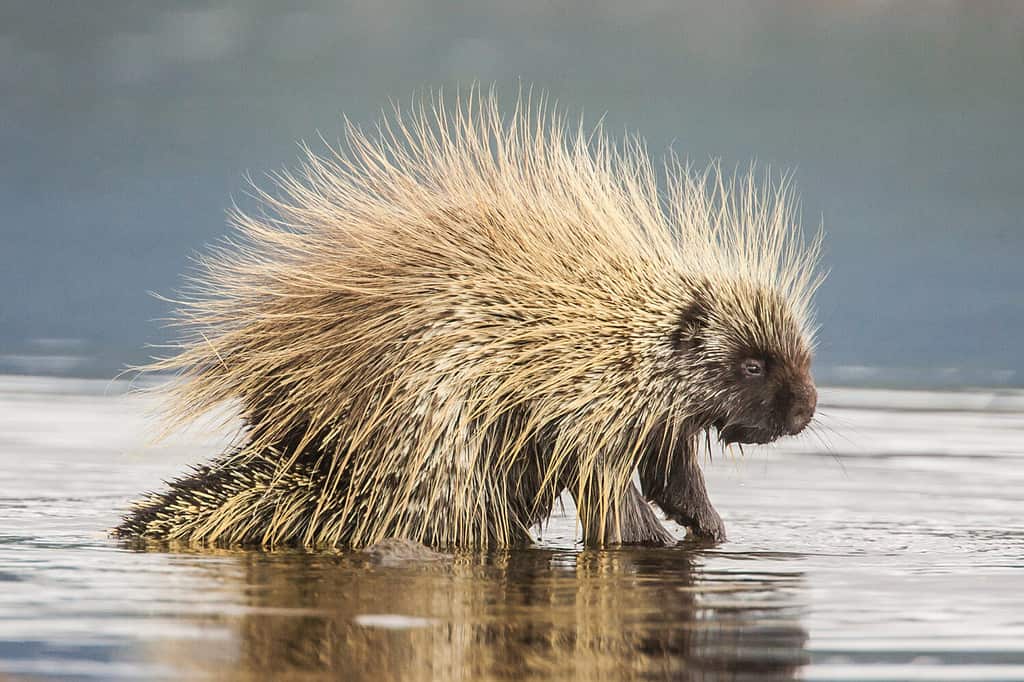
The post Porcupine Outsmarts Leopard Using Its Sharp Quills appeared first on A-Z Animals.
Porcupines are famous for their pointy quills that can hurt their predators. In the wild, this spiky defense lets the porcupine stay safe, even amongst fearful predators like leopards. This video by Latest Sightings shows a leopard trying to hunt a porcupine, but it’s not going quite well. Read below to learn about how the porcupine’s quills kept it safe.

Porcupine quills are an effective defensive measure.
©Jukka Jantunen/Shutterstock.com
How Do Porcupine Quills Work?
To understand how the quills work, it’s important to first know what they are. Quills are a type of modified hair. Quills are stiff, hollow hairs made of keratin, the same protein in your hair and nails. Just as we have thousands of hairs, porcupines have thousands of quills all over their bodies—around 30,000 to be exact. Quills cover most of a porcupine’s body, especially the back, sides, and tail, but areas like the face, belly, and feet are less protected, depending on the species. The quills are naturally sharp, making them perfect for piercing the skin of predators that attack. When a quill falls out, it grows back over several weeks in the same spot.
Contrary to popular myths, porcupine quills are not shot or thrown. When a predator makes contact, the porcupine’s quills can become embedded in the attacker’s skin, as happened when the leopard in the video swiped at the porcupine. The quills are loosely attached to the porcupine, allowing them to detach easily if something pushes or presses onto them. The detachment of the quill causes minimal discomfort to the porcupine, making this an effective defense. North American porcupines have barbs on the tips of their quills that face backward, making them difficult and painful to pull out. Pulling out these quills can be dangerous, as it tears tissue and increases the risk of infection. Quills are not poisonous or venomous in any way. While they may look similar to bee stings, porcupine quills are hollow and are only effective for piercing.
The quills are one of the best passive defenses in the animal kingdom. The immediate pain and potential long-term effects, such as muscle damage, serve as strong deterrents to predators. After attacking once, many predators quickly learn that they should leave the porcupines alone. Because of this, porcupine quills are an excellent defense, and the reason the porcupine in the video was able to escape unscathed.
The post Porcupine Outsmarts Leopard Using Its Sharp Quills appeared first on A-Z Animals.
June 27, 2025 at 06:02PMSonny Haugen
.jpeg)
.jpeg)

0 Comments